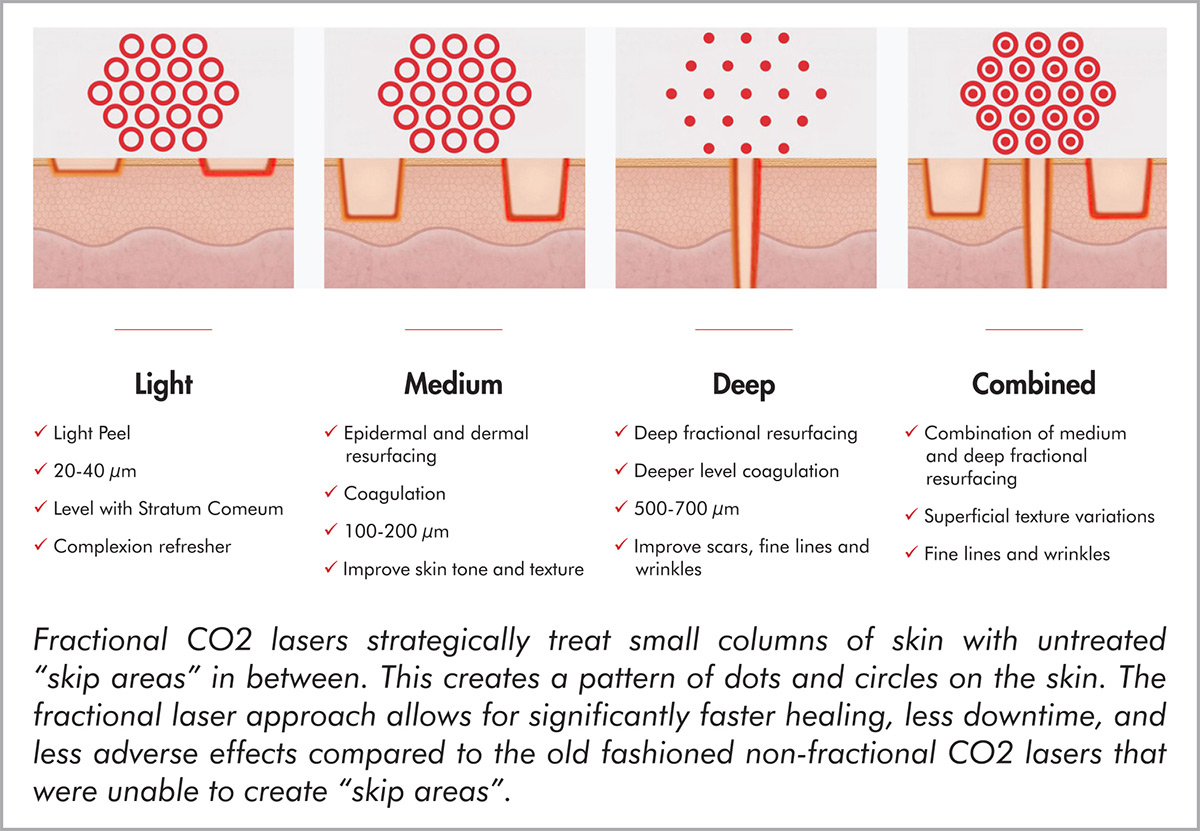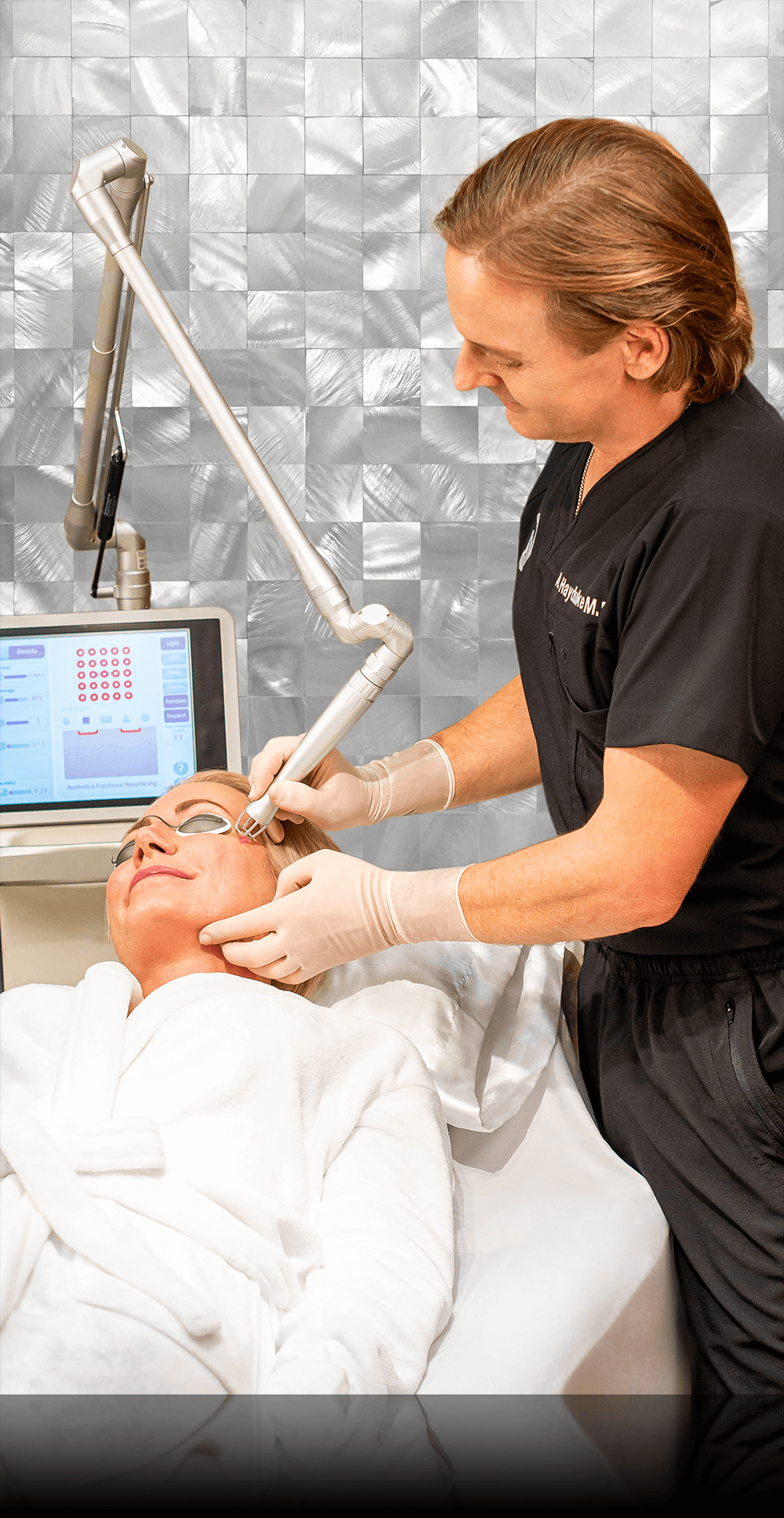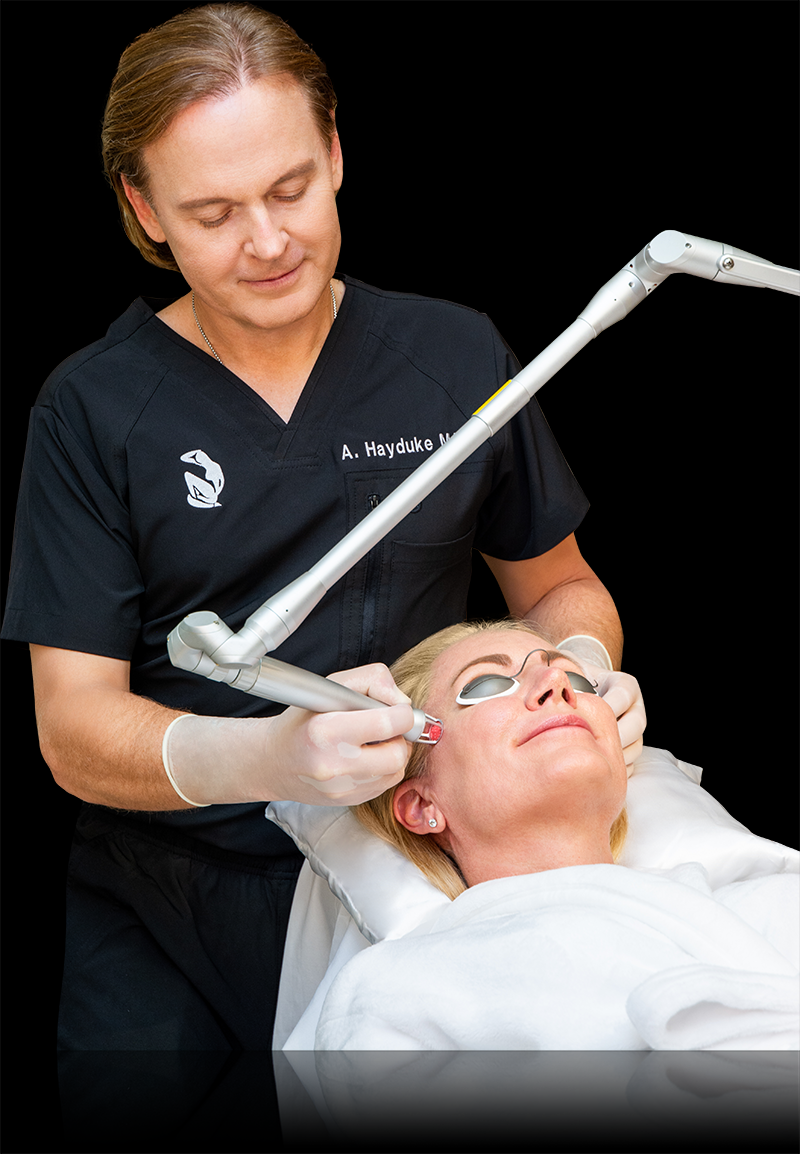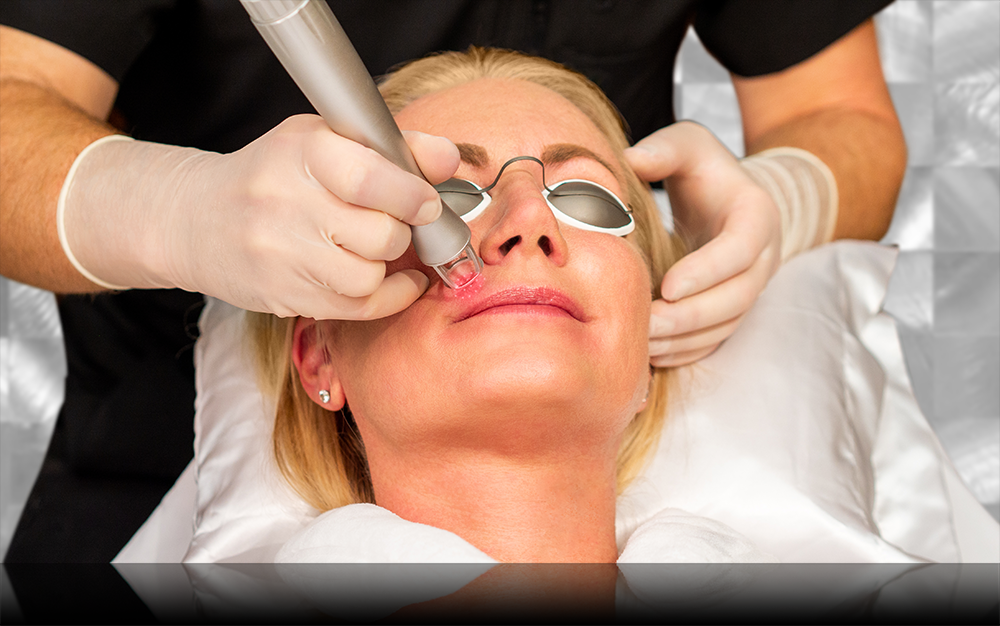

DR Andrew j. HAYDUKE
Aging and long-term exposure to the sun negatively impacts your skin’s appearance. The ability to rejuvenate sun-damaged, wrinkled, and aging skin has been revolutionized by modern laser technology. Laser skin resurfacing uses a laser (light source) to physically remove (vaporize) the outermost sun damaged layers of your skin. The underlying fresher layers are then exposed and your skin appears smoother, clearer, younger and healthier. Modern fractional laser technology has dramatically shortened the recovery period after laser resurfacing – further increasing the popularity of facial laser skin resurfacing.
Although clients over 45 years old frequently seek facelift, necklift and eyelid surgery from Dr. Hayduke to refresh the appearance of their aging face and neck – they often forget that the appearance of their skin is also a significant factor in “how old” their face actually looks. Facial skin resurfacing is probably the most commonly overlooked component of a proper (comprehensive) facial rejuvenation strategy for facial aging. With the advent of fractional laser technology, laser skin resurfacing has less “downtime” than ever before and can fit into even the busiest lifestyles.

Laser skin resurfacing helps reduce wrinkles, fine lines, uneven skin discoloration, brown age-spots, textural irregularities, surgical scars after Mohs surgery, surgical scars after facelift surgery, surgical scars after cosmetic eyelid surgery, and even improves some depressed acne scars. Laser skin resurfacing can help refresh your overall facial complexion and can help with blending of the resultant scars and skin grafts used for reconstructive facial surgery (ex: after Mohs skin cancer excision). Laser skin resurfacing also improves dull skin tone that can make your facial skin appear aged and weathered.

Dr. Hayduke customizes your laser treatment based upon your age and skin issues. For his clients over 45 years old, Dr. Hayduke generally prefers the modern Carbon Dioxide (CO2) laser because of its superior effectiveness on this particular age group. Dr. Hayduke performs both ablative fractionated as well as ablative non-fractionated CO2 laser treatments.
Dr. Hayduke customizes your laser treatment by using a combination of deep, medium and mild fractionated CO2 laser settings based upon your specific skin conditions and based upon the specific area (zone) of your face being treated. For the most stubborn skin issues (such as deep wrinkles around the mouth), Dr. Hayduke may choose a deep fully-ablative (non-fractionated) CO2 laser treatment. For younger patients (less than 45 years old) with very mild skin issues, Dr. Hayduke may opt for the gentler Erbium laser.
For clients with problematic benign (non-cancerous) brown spots on their skin (ex: age spots, liver spots, solar lentigines, freckles, etc), Dr. Hayduke may choose to also use the Q-switched Neodymium:YAG (Nd:YAG) laser focused on just the worst brown spots themselves. The Q-switched Nd:YAG laser is exceptionally effective on severe brown pigmented skin patches/spots and even on some brown facial birthmarks, moles and freckles. For clients over age 45 with severe problematic facial brown spots, combining the use of the Q-switched Nd:YAG laser specifically for the brown spots themselves and the fractional CO2 laser for the wrinkles, fine lines, and textural issues on the remainder of the face is frequently the best multi-laser approach.

Most importantly, Dr. Hayduke has many laser resurfacing options and he customizes your laser resurfacing treatments based upon your skin issues, age, skin type, amount of available downtime, and your ultimate skin rejuvenation goals. For clients over 45 years of age, a series of repeat laser treatments strategically spaced several months apart usually yields the ultimate final result. In some cases, Dr. Hayduke combines the use of several different lasers for patients with multiple complex facial skin issues. Every patient’s skin is quite unique and Dr. Hayduke believes that customization of the laser resurfacing strategy is required to achieve the best results.
Dr. Hayduke performs laser skin resurfacing in the office setting using a topical anesthetic jelly applied to the outside of your skin (not injected). The jelly is left on your skin for about one hour and then gently wiped off before the treatment begins. You are totally awake and comfortable during the treatment. Freezing cold air (-30° C) is constantly blown onto the treated areas for enhanced comfort. Dr. Hayduke personally performs your laser treatment, rather than delegating your treatment to his nurse or physician assistant.
Dr. Hayduke also personally sets all of his laser’s custom power settings based upon his extensive knowledge of human anatomy, facial skin histology, and post-laser wound healing – as only a board certified plastic surgeon can do. One of the main advantages of going to Dr. Hayduke for your facial laser skin resurfacing is that fact that the entire procedure and all of the complex custom laser power settings will be done by Dr. Hayduke himself. When it comes to lasering your face, insisting that the procedure is actually performed by a board certified plastic surgeon, such as Dr. Hayduke, is probably a prudent decision.

“Full face” laser treatments take Dr. Hayduke about 50 minutes. Lasering of the neck (“neck laser”) takes Dr. Hayduke about 20 minutes or less. Some patients add “neck laser” to a “full face” treatment. Facelift patients may add a “full face” laser treatment about six weeks after their facelift to refresh their skin’s complexion and to improve fine lines, wrinkles and facelift scars. Facial reconstructive patients (ex: after Mohs skin cancer excision) may choose a “full face” laser treatment (six weeks after skin cancer excision) to help blend the facial scars and skin grafts used for their reconstruction with the rest of their facial skin.
In general, the lasered facial skin heals in about 6 to 12 days, depending upon the nature of the conditions that were treated and the intensity of the laser’s settings. The stronger the laser’s settings, the longer your recovery time will be. Older patients should expect pinkness to persist for a longer period of time in the deepest treated areas (ex: the crow’s feet area and the area around the mouth). You can usually start applying makeup about one week after your treatment. Patients are generally comfortable being seen in public once they have healed enough to safely apply facial makeup.
